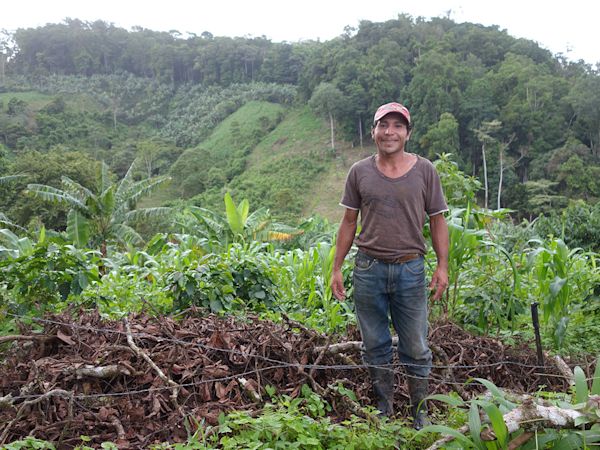
Welcome to Higher Impact, a monthly series dedicated to sharing high-level impact progress at Kiva. You’ll hear a lot of great individual borrower stories from Kiva, but this series takes you behind the scenes to catch a glimpse of the impact our Field Partners are making in their regional communities. Check out the difference we’re making and tune in every month.
Our next installment comes from our Investment Manager for the Latin America and Caribbean region, Wesley Schrock. Below he delves into Kiva’s catalytic impact in challenging contexts.
Kiva’s global reach means we often encounter unexpected political unrest, natural disasters, currency crises and other instabilities that affect lending to borrowers. Our experience in Nicaragua shows how Kiva responds to these challenges.
Crises happen: 2 examples from Nicaragua
2008-2011: No-Pago Movement
With the backing of the government, tens of thousands of smallholder farmers collectively decided not to repay loans to microfinance institutions (MFIs). This movement affected mostly rural areas and the MFIs serving them. Our Field Partners PAC, CEPRODEL, and AFODENIC were almost put out of business. The good news is that from this crisis was born CONAMI, a government agency that has brought transparency and stability for both borrowers and investors.
April 2018 - Now: Protests Against Government
In April of last year, Nicaraguans took to the streets en masse to protest social security reform. The government's violent repression of these protests spurred a political crisis with broad-ranging, devastating economic effects including considerable population displacement. After the deadly protests, roadblocks and nationwide strikes of last year, this year has seen an uneasy peace. Our Field Partners, particularly those working where protests have been concentrated in states along the Pacific coast near Managua, have seen loan delinquency triple or quadruple. Our partners ADIM and MiCredito are taking a disaster recovery approach to the crisis, often using Kiva funding to offer loans with extended repayment terms or loans that help individuals transition to different economic activities.
How we respond and why it matters
In deciding how to act in the face of crisis, we assess our partner’s outstanding loan portfolio and likely financial losses. It’s also crucial to talk to other funders. If funders decide to stop providing capital or accelerate repayments, lending will decline dramatically, thus jeopardizing the survival of the MFI. We also talk to other actors, such as MFI networks, and monitor external sources of information.
As Kiva’s capital is risk-tolerant, we tend to take the long view, an approach that has bolstered Kiva's reputation in the region. Many international funders left Nicaragua during the No Pago movement and were slow to return. Kiva stayed and our partners remember. In 2017, ADIM even presented me with an award (that lives on my desk) recognizing the length of our partnership. We've taken a wait-and-see approach with the current crisis as well, alerting lenders of the situation and stepping up the frequency of our financial monitoring while continuing to provide funding.
 A Kiva borrower with her children in Nicaragua
A Kiva borrower with her children in NicaraguaHaving this kind of strong, high-trust relationship enables us to jointly launch new products and serve new markets (i.e. MiCredito's domestic education product and a new branch in Costa Rica serving displaced individuals). These kinds of relationships also enable us to move toward sustainability. We introduced the idea of a fee-to-Kiva at the Kiva Cumbre in Barranquilla, Colombia last year. Though I’ve been at Kiva for over 7 years, my eyes actually got a little watery when MiCredito's CEO, Veronica Herrera, was the first to stand up and eloquently express how valuable Kiva funding has been and that she would support this initiative.
 Another Kiva borrower in Nicaragua.
Another Kiva borrower in Nicaragua.
Balancing impact, risk, and scale
Things don't always work out. Nicaraguan small- and medium-sized enterprises (SME’s) have been hit particularly hard by the current crisis. Unfortunately, this includes our Field Partner Tecnosol, a for-profit solar company. Our partnership is currently paused and the organization is having trouble making payments. Several years ago, we decided to end 2 partnerships with microfinance institutions that never fully recovered from the No Pago movement.
Kiva’s crowdfunding platform uniquely provides risk-tolerant, low-cost capital, giving us the ability to not only support, but to incubate, riskier organizations in riskier environments in an intentional but bounded approach to spur impact. As we scale through new models of funding and revenue, we will be even better equipped to harness this unique capital to make an impact in the places it’s needed most.
PREVIOUS ARTICLE
Kiva borrowers to thriving business people: The food edition →NEXT ARTICLE
Employee spotlight: Amit Pansare →













